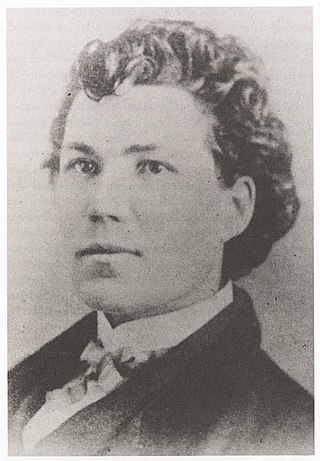
Sarah Emma Edmonds was a British North America-born woman who claimed to have served as a man with the Union Army as a nurse and spy during the American Civil War. Although recognized for her service by the United States government, some historians dispute the validity of her claims as some of the details are demonstrably false, contradictory, or uncorroborated.

Castle Thunder, located between what is now 17th Street and 18th Street on northern side of E Cary Street in Richmond, Virginia, was a former tobacco warehouse, located on Tobacco Row, converted into a prison used by the Confederacy to house civilian prisoners, including captured Union spies, political prisoners and those charged with treason during the American Civil War. A large number of its inmates were sentenced to death. Even though the inmates were sometimes allowed boxes of medicine and other supplies, the prison guards had a reputation for brutality.
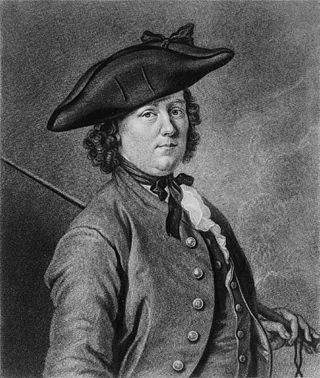
Many people have engaged in cross-dressing during wartime under various circumstances and for various motives. This has been especially true of women, whether while serving as a soldier in otherwise all-male armies, while protecting themselves or disguising their identity in dangerous circumstances, or for other purposes.
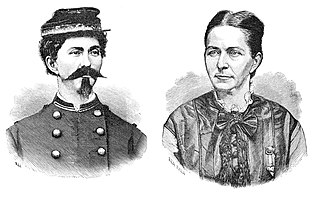
Loreta Janeta Velázquez was an American woman who wrote that she had masqueraded as a male Confederate soldier during the American Civil War. The book she wrote about her experiences says that after her soldier husband's accidental death, she enlisted in the Confederate States Army in 1861. She then fought at Bull Run, Ball's Bluff, and Fort Donelson, but was discharged when her sex was discovered while in New Orleans. Undeterred, she reenlisted and fought at Shiloh, until unmasked once more. She then became a Confederate spy, working in both male and female guises, and as a double agent also reporting to the U.S. Secret Service. She remarried three more times, being widowed in each instance. According to William C. Davis, she died in January 1923 under the name Loretta J. Beard after many years away from the public eye in a public psychiatric facility, St. Elizabeths Hospital. Most of her claims are not supportable with actual documents, and many are contradictable by actual documentation.

Sarah Malinda Pritchard Blalock was a female soldier during the American Civil War. Despite originally being a sympathizer for the right of secession, she fought bravely on both sides. She followed her husband, William Blalock, and joined the CSA's 26th North Carolina Regiment, disguising herself as a young man and calling herself Samuel Blalock. The couple eventually escaped by crossing Confederate lines and joining the Union partisans in the mountains of western North Carolina. During the last years of the war, she was a pro-Union marauder raiding the Appalachia region. Today she is one of the most remembered female combatants of the Civil War.
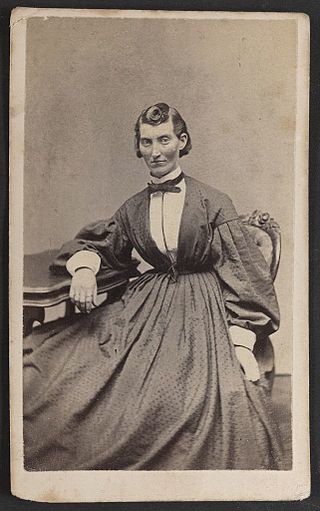
Frances Louisa Clayton, also recorded as Frances Clalin, was an American woman who purportedly disguised herself as a man to fight for the Union Army in the American Civil War, though many historians now believe her story was likely fabricated. Under the alias Jack Williams, she claimed to have enlisted in a Missouri regiment along with her husband, and fought in several battles. She claimed that she left the army soon after her husband died at Stones River.

William Plummer Benton was an American lawyer and soldier who served in both the Mexican–American War and the American Civil War, where he would rise to the rank of brigadier general and, in 1866, after his service had ended, would be awarded the brevet grade of major general.

Lorinda Anna Blair Etheridge was a Union nurse and vivandière who served during the American Civil War. She was one of only two women to receive the Kearny Cross. She was inducted into the Michigan Women's Hall of Fame in 2010.
During the American Civil War, sexual behavior, gender roles, and attitudes were affected by the conflict, especially by the absence of menfolk at home and the emergence of new roles for women such as nursing. The advent of photography and easier media distribution, for example, allowed for greater access to sexual material for the common soldier.
Mary and MollyBell were two young women from Pulaski County, Virginia who disguised themselves as men and fought in the American Civil War for the Confederacy. The pair successfully managed to keep their gender hidden from their fellow soldiers and the military for two years while fighting in several major battles, until they were discovered and incarcerated. Soon thereafter, the women were released from prison and forced to return home.

Tyree Harris Bell was a Confederate States Army brigadier general, during the American Civil War.
This is a timeline of women in warfare in the United States before 1900.This list includes women who served in the United States Armed Forces in various roles. It also includes women who have been Warriors and fighters in other types of conflicts that have taken place in the United States. This list should also encompass women who served in support roles during military and other conflicts in the United States before the twentieth century.
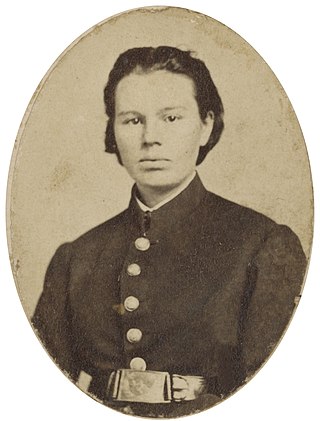
Frances Hook claimed that she, disguised as a man, enlisted as a soldier in the Union Army during the U.S. Civil War. She stated her aliases were Pvt. Frank Miller, Frank Henderson, Frank Martin and Frank Fuller. However, the enlistment records for the units in which she claimed to have served show no evidence of those aliases, nor any record to corroborate her story.
This is a timeline of women in warfare in the United States up until the end of World War II. It encompasses the colonial era and indigenous peoples, as well as the entire geographical modern United States, even though some of the areas mentioned were not incorporated into the United States during the time periods that they were mentioned.
Sophronia Smith Hunt was an American woman who disguised herself as a man and secretly served as a soldier in the Union Army during the American Civil War. Her first soldier husband died after he was wounded at the Battle of Jenkins' Ferry. They served in the 29th Iowa Infantry Regiment.
Mary Siezgle was a soldier of the Union Army in the American Civil War. Her service began as a nurse, but she joined her husband in the 44th New York Infantry disguised as a man. She was one of five women who are known to have participated as a combatant in the Battle of Gettysburg.
This is a list of works on the subject of wartime cross-dressing.

The 9th Texas Infantry Regiment was a unit of Confederate States Army infantry volunteers organized in December 1861 that fought during the American Civil War. The regiment fought at Shiloh, Perryville, and Stones River in 1862, Chickamauga in 1863, the Atlanta Campaign, Allatoona, and Nashville in 1864, and Spanish Fort and Fort Blakeley in 1865. The remaining 87 officers and men surrendered to Federal forces in May 1865. Two of the regiment's commanding officers were promoted brigadier general.

The 32nd Texas Cavalry Regiment, sometimes incorrectly named Andrews's 15th Texas Cavalry Regiment, was a unit of volunteer cavalry mustered into the Confederate States Army in May 1862 and which fought during the American Civil War. The regiment was formed around companies from Richard Phillip Crump's 1st Texas Cavalry Battalion which fought in Indian Territory and at Pea Ridge. Many of the soldiers died of disease in the unhealthy camps near Corinth, Mississippi. The cavalrymen were dismounted in July 1862 and served as infantry for the rest of the war. The regiment fought at Richmond, Ky., Stones River, and Chickamauga in 1862–1863, in the Meridian and Atlanta campaigns and at Nashville in 1864, and at Spanish Fort and Fort Blakeley in 1865. The regiment's 58 surviving members surrendered to Federal forces on 9 May 1865.











